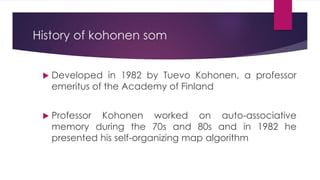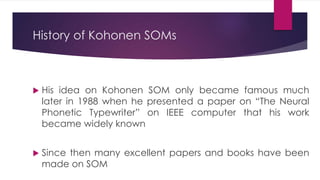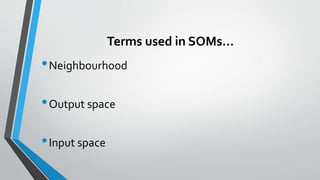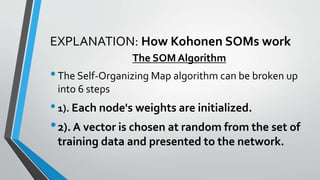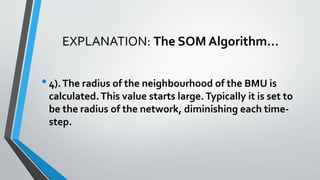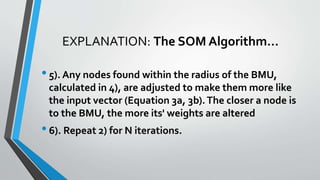Kohonen self-organizing maps (SOMs) are a type of neural network that performs unsupervised learning to produce a low-dimensional representation of input patterns. SOMs were developed in the 1980s by Professor Tuevo Kohonen and work by mapping multi-dimensional input onto a two-dimensional grid. The algorithm finds groups in the data by finding similarities between input vectors and weight vectors in the nodes. It adjusts the weights to better match the input through competitive learning without supervision. SOMs have been used for applications like document organization, poverty classification, and text-to-speech.

